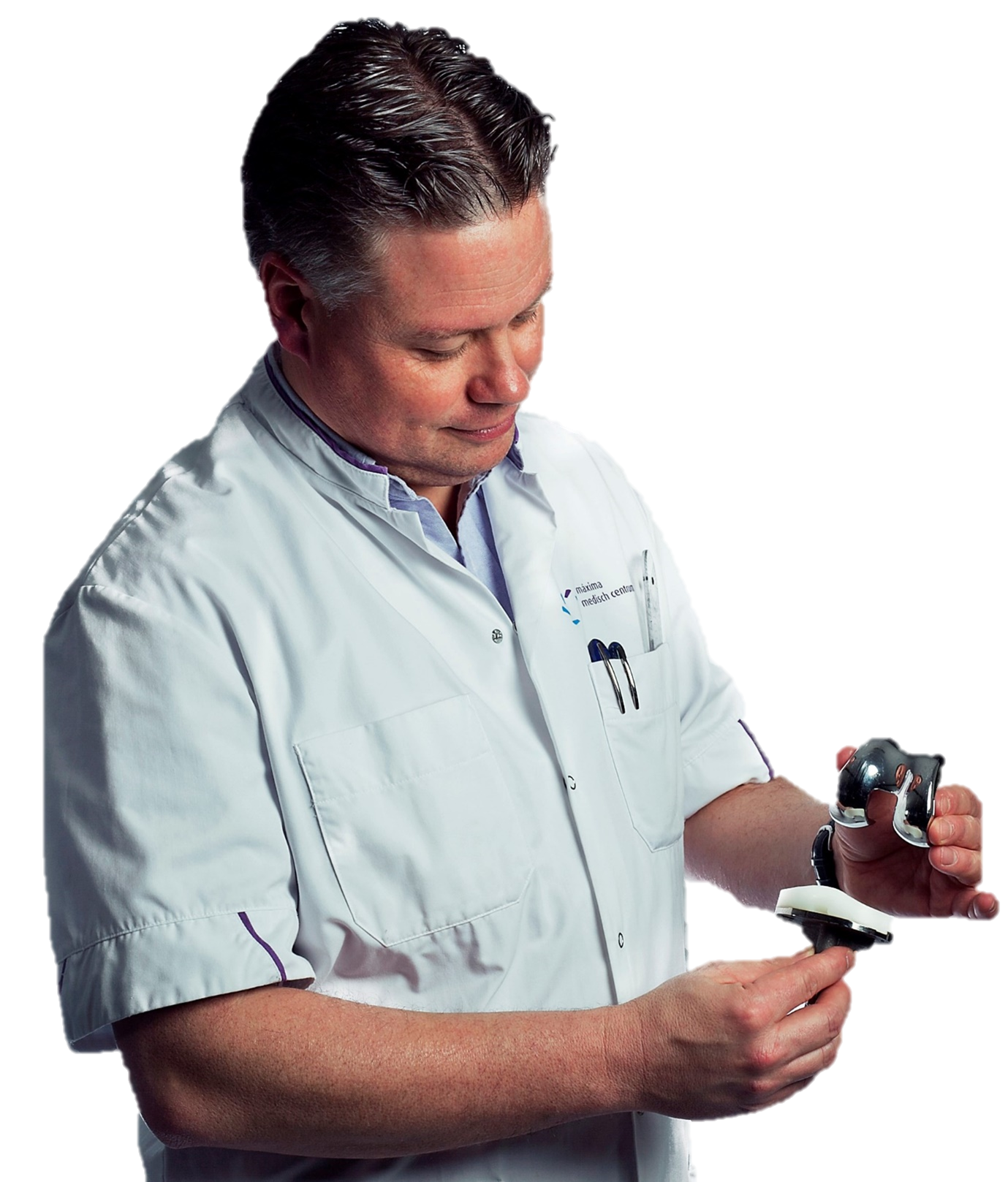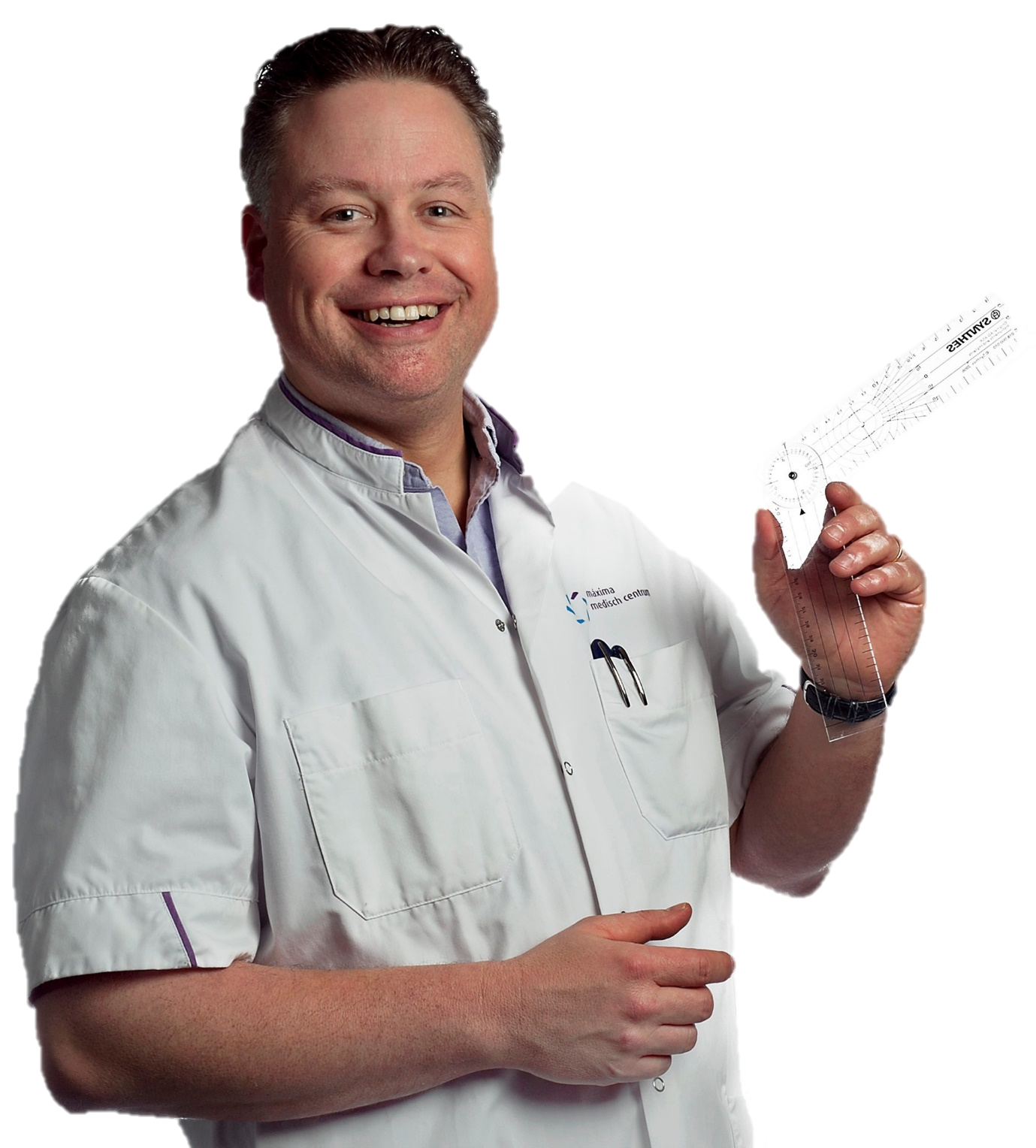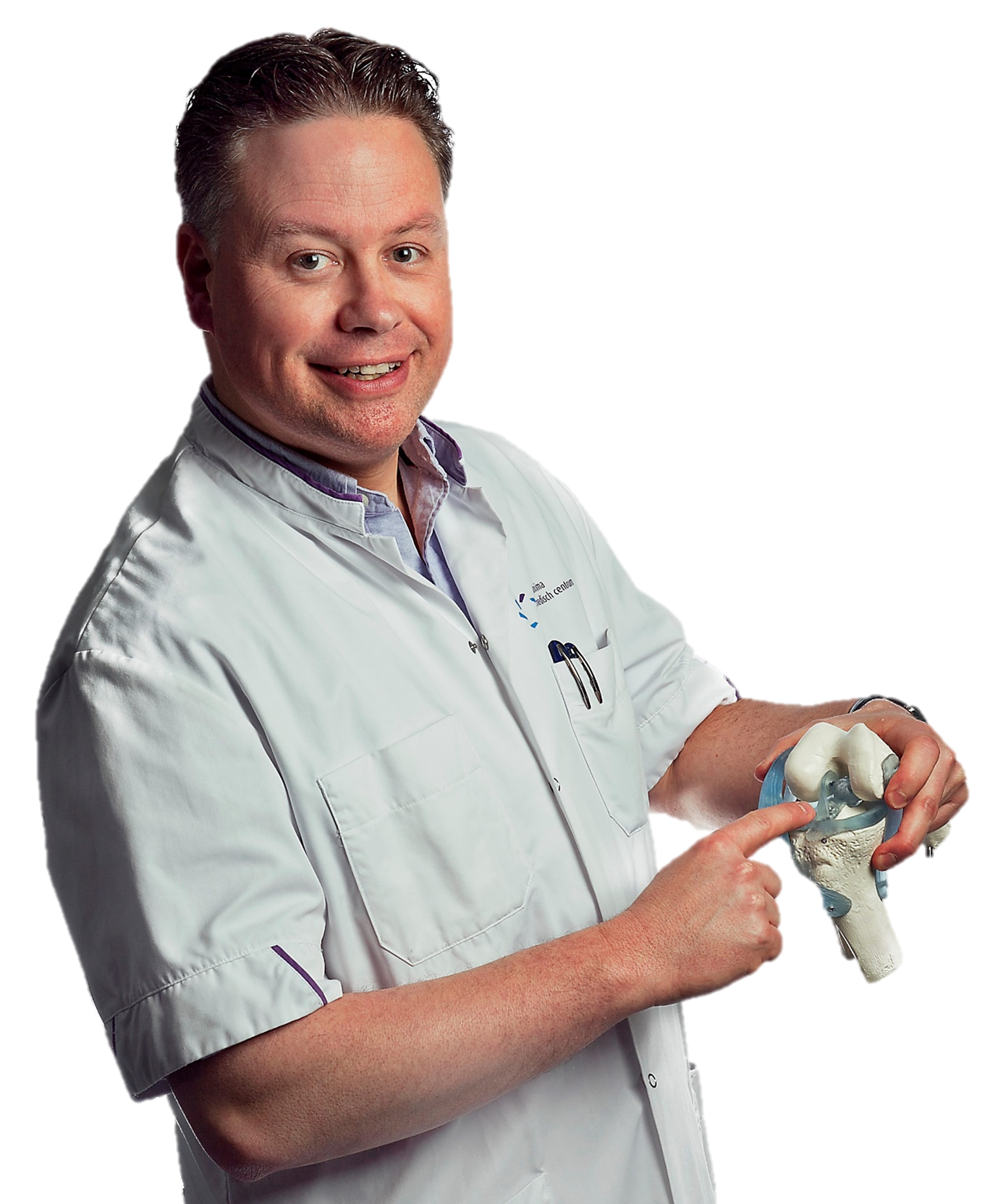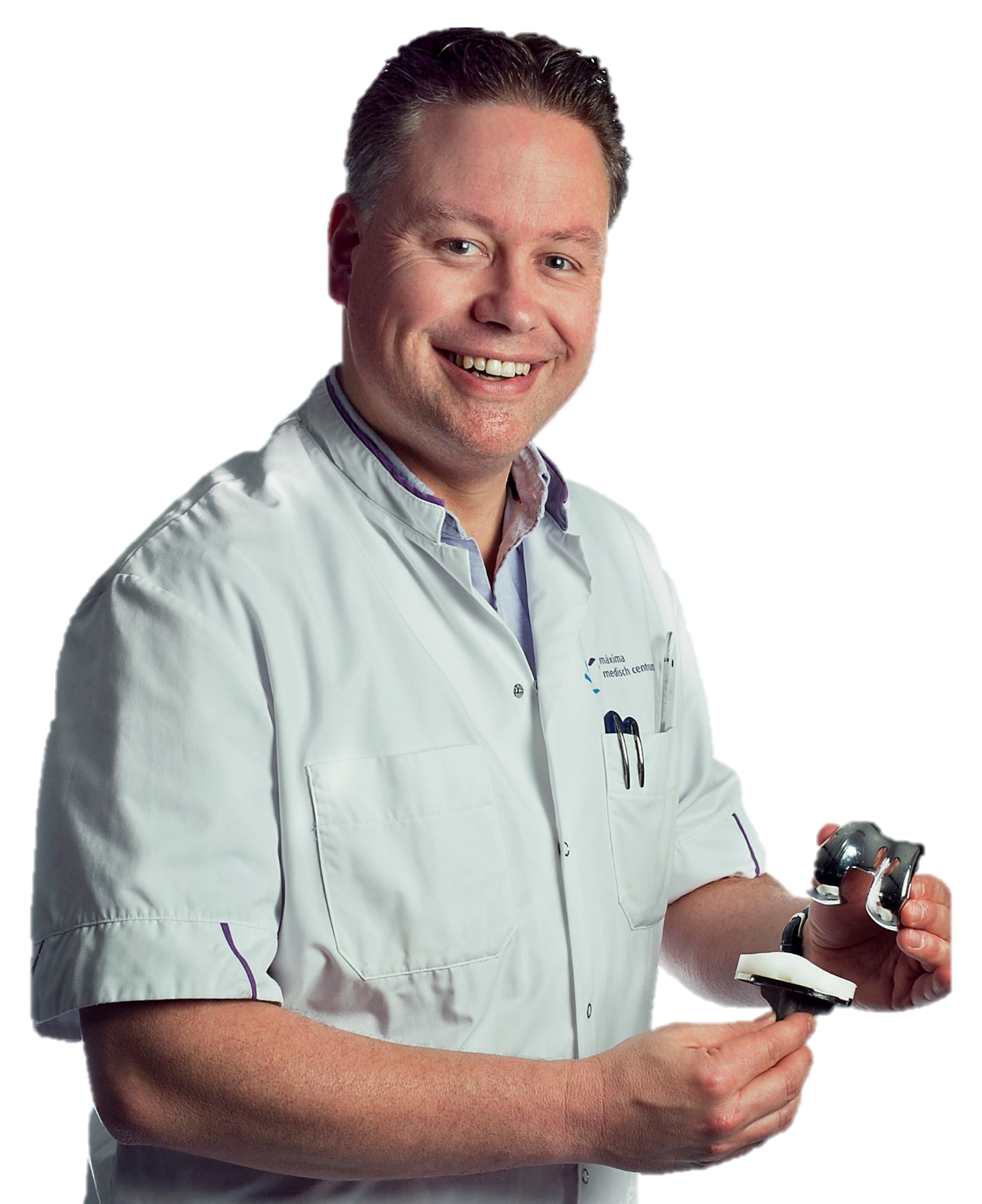STARR Study Group, Meuffels, D. E., &...
New publication
STARR Study Group, Meuffels, D. E., &...
New publication
Arens T, Melick van N, van der Steen MC, Janssen...
Editor’s Pick Prof Stafano Zaffagnini Journal of Experimental Orthopaedics
Meniscus
The meniscus is a crescent-shaped pad in the knee, between the bones of the thigh bone (femur) and shin bone (tibia). There are 2 menisci in the knee: an inner and an outer meniscus. In addition to acting as a shock absorber, the menisci also have other functions such as distributing synovial fluid and adjusting the shape between the convex ends of the femur and the relatively flat tibia. The outer meniscus is more mobile than the inner meniscus to allow proper movement of the knee joint. The menisci are attached to the capsule, the sheath of the knee joint. The meniscus is supplied with blood vessels from this capsule. Part of the meniscus has the chance to heal after an injury: this concerns tears that run in the well-perfused area. Meniscus tears in the poorly perfused area of the meniscus usually cannot heal. Abnormal movement of a broken meniscus causes pain because the capsule is tensed.
Complaints of a torn meniscus
A meniscus can tear if the knee undergoes a twisting injury (in the case of football or hockey injuries, indoor sports and skiing accidents). The meniscus can also tear during a rotational movement of the knee in a squatting position (eg laying on the floor) or with prolonged overload (running). Symptoms of a torn meniscus are pain on the inside or outside of the knee, swelling of the knee joint, pain when squatting and kneeling and/or lock complaints (the feeling that something is stuck in the knee). If the torn meniscus is trapped, the knee cannot be fully extended.
Types
of Meniscus Injuries The meniscus can tear in different ways: a transverse tear, flap tear, fish mouth tear or tearing completely and flipping over (bucket handle tear = tear that resembles a folded handle on a bucket). The various tears can occur in well or less well perfused meniscus tissue. The better the blood flow, the more chance of healing the meniscus tear.
Diagnosis
First of all, making the diagnosis is important. Meniscus injuries often occur in combination with cruciate ligament injuries and cartilage abnormalities of the knee. Early recognition and adequate treatment of these injuries is important for a good recovery. The diagnosis of meniscus tear is made on the basis of the patient’s story (the way the complaint developed) and a physical examination of the knee. The meniscus cannot be seen on an X-ray. However, this photo is important to find other injuries or causes of the complaints. Sometimes an MRI scan of the knee is made for the diagnosis or keyhole surgery is performed.
Therapy
In young people with good blood flow to the meniscus, the meniscus can heal on its own if kneeling and squatting movements are avoided. The knee itself indicates where bending is sensible: the limit has been reached when pain is reached. This can sometimes take several months. If the complaints persist and/or the knee locks up, keyhole surgery (= arthroscopy) is necessary. Depending on the type of meniscus tear, 3 types of treatment can be chosen during arthroscopy:
A small stable tear, at the edge of the meniscus, can heal spontaneously. Sometimes the scar tissue is cleaned from the tear to aid healing. It is important not to kneel or squat for 3 months after surgery to allow the meniscus to heal.
A complex tear or tear in a poorly perfused area is best removed (this is called meniscectomy). The chances of recovery are very slim and in this case the meniscus is doing more harm than good for the knee. Only the bad piece of meniscus is removed; what is good is left in place to allow the function of the meniscus as good as possible.
An unstable tear, at the edge of the meniscus, can sometimes be sutured or trephined (puncture holes to improve blood flow with or without suture). This requires special surgical skills from the orthopedic surgeon. This can almost always take place during the same arthroscopy. Sometimes it is necessary to make an extra incision on the inside or outside of the knee to properly repair the meniscus. After a meniscus suture you will have to walk with crutches for 6 weeks. You are also not allowed to kneel or squat for 3 months. You may just bend the knee in the air and also lie in bed with your knees bent. Only applying force to the knee in a flexion position (such as when kneeling and squatting) reduces the chance of healing of the sutured meniscus. The success rate of the meniscus suture is 60-80%. For treatment advice after surgery, see Protocol Meniscus.
If the meniscus can heal, this is always preferable to its removal. Removing the meniscus can lead to osteoarthritis of the knee after 15-20 years. However, suturing also has some limited disadvantages: the rehabilitation (6 weeks on crutches and limitation of kneeling and squatting) as well as the risk of complications from the meniscal suture. The risk of damage to skin nerves or blood vessels is possible when the meniscus is sutured, but fortunately it occurs very rarely (< 1%). For these reasons, I only suture meniscus tears with a good chance of healing.
With all treatments of the meniscus, additional injuries of the knee must also be treated in a timely and adequate manner. Sometimes it is necessary to do this step by step. An example of this is an injury to the inner ligament of the knee (medial collateral ligament MCL). This band is often also involved in injuries of the meniscus after sports injuries. The medial knee ligament heals without surgery with timely recognition (< 2 weeks after injury) and treatment with a custom knee brace (to be worn day and night for 6 weeks). If the knee bends and straightens well afterwards, the arthroscopy can take place for the treatment of the meniscus tear. An additional tear of the anterior cruciate ligament should always be treated if the meniscus is sutured. A reconstruction of the anterior cruciate ligament usually takes place in a second surgery.
You can read about patient experiences with meniscus injuries at Case.
Reimbursement insurance
All orthopedic care in our hospital is fully reimbursed by all insurers.





